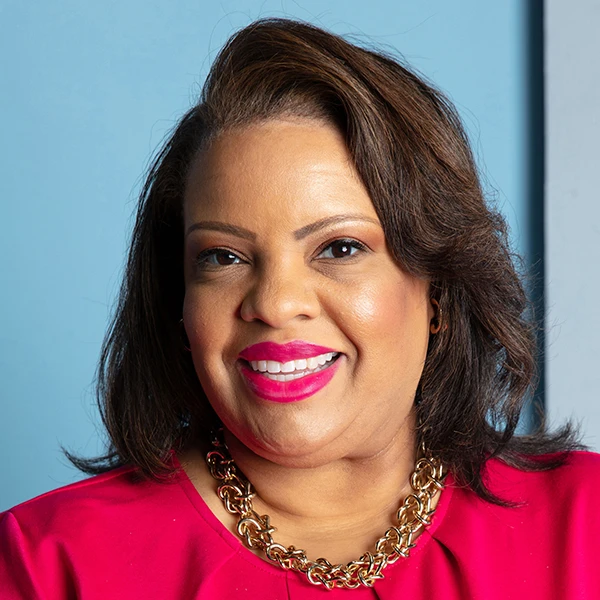Key takeaways:
Most families go through 3,000 disposable diapers during the first year of their child’s life.
Half of U.S. families with young children struggle to afford diapers.
You can receive free diapers from diaper banks, food banks, and community organizations.
According to the American Academy of Pediatrics, most parents will go through about 3,000 diapers during the first year of their child’s life. Since a disposable diaper costs about 30 cents, you will need $1,000 the first year for diapers alone. This doesn’t consider the total cost of diapering, which would include items such as wipes and rash creams.
For many parents, the expense of diapers may be challenging. Not having enough diapers can affect a parent’s ability to work, since child care providers often require parents to supply diapers.
If you have trouble providing diapers for a child, you’re not alone. A recent study found that diaper need affects 1 in 3 U.S. families with young children, and advocates report a shortage for half of families with small children as of 2025.
Diaper need means not having enough diapers to keep an infant or a child clean, dry, and healthy. Diaper need is considered a public health crisis and a social determinant of health. Lack of diapers affects health outcomes for children and families. Families that face a diaper shortage are also more at risk for food insecurity.
Some households must choose between diapering a child and providing other basic needs, such as food and utilities. But help is available. Diaper banks, food banks, and other community organizations offer free diapers.
Below, we explore how to get free diapers and other essentials for your child.
1. Diaper banks
The National Diaper Bank Network (NDBN) is a U.S. nonprofit that aims to end diaper need. The network includes more than 240 community-based diaper banks. These facilities collect, store, and give free diapers to families. Most of the diapers are disposable, but some sites provide cloth diapers.
There is at least one NDBN location in every state. Diaper banks also serve Washington, D.C., and Puerto Rico.
Huggies is a founding sponsor of NDBN. The company donates millions of diapers to affiliated diaper banks every year. The NDBN and its partners serve about 320,000 children every month. Check the NDBN directory to find a diaper bank near you.
Get help with your grocery bill. The Women, Infants, and Children (WIC) program provides nutritional and health benefits for pregnant women and children in qualifying households. Learn more about what WIC covers and how to apply.
Is your child eligible for CHIP? The Children’s Health Insurance Program (CHIP) covers millions of people in the U.S. younger than age 19. Find out if your child is eligible for coverage.
Surprising items you can buy with SNAP: Supplemental Nutritional Assistance Program (SNAP) benefits can be used to pay for almost any food item, including baby formula. Find out what other items can be purchased using SNAP.
Diaper banks receive diaper donations and then distribute them for free. Some sites have income requirements; others do not.
Some diaper banks have more formal programs. The Los Angeles Regional Food Bank, for example, gives families 40 diapers per child per month. The Texas Diaper Bank in San Antonio reserves diapers, wipes, and other products for families with low incomes in more than a dozen counties. This helps ensure the resources go to children who are most in need.
To learn about free diapers, contact a diaper bank and ask about eligibility. If a diaper bank fulfills walk-in requests, call first to make sure they have your child’s diaper size.
Read more like this
Explore these related articles, suggested for readers like you.
Diaper banks rely on diaper donations and financial contributions to continue their efforts. Many also distribute menstrual supplies.
2. Other local programs
Families can also receive diaper assistance from:
Food banks, which you can find by searching WhyHunger or Feeding America
Religious organizations, such as Catholic Charities USA
Community-based programs, such as Moms Helping Moms in New Jersey, Basics4Babies in Florida, and Mother to Mother in Tennessee
Organizations that provide many other items for infants and older children (Baby2Baby is one that reaches all states)
You may need diapers, incontinence items, or menstrual supplies for older children with medical conditions. Diaper banks and other organizations may have diapers for older children and adults with incontinence. Contact a diaper bank or program to find out what items are available.
3. Medicaid
State Medicaid programs cover diapers for toddlers and older children who have conditions that cause incontinence. Many states also cover these supplies for certain adults. For you to get free diapers, a healthcare professional must determine that diapers are medically necessary.
There are a few details to note if you are seeking Medicaid coverage for diapers:
For children and adolescents under age 21 with Medicaid, the Early and Periodic Screening, Diagnostic, and Treatment (EPSDT) benefit can cover the costs of diapers for children with incontinence.
Children ages 3 and older with medical conditions such as cerebral palsy are eligible to receive incontinence supplies from the EPSDT program. Details vary by state.
Talk to a healthcare professional about the documentation you will need to access free diapers.
Many mail-order healthcare-supply companies can also help you through the process.
Most Medicaid programs will cover incontinence and bladder-control products for adults. But this is an optional benefit for adults. You need a diagnosed condition causing incontinence to access these products through Medicaid.
4. Free samples
Many diaper brands offer free samples and discounts through their rewards programs. To sign up, download the brand’s app or register online for special offers.
Here are some popular diaper brands you can connect with:
There are other brands that offer free samples, but you may need to pay shipping costs. You can contact diaper brands on social media to request a free sample. A brand may offer samples and savings if you download and engage with its app.
How can I get a free baby box?
Many retailers will give you a free baby box when you create a baby registry or another profile on their site. This bundle may include essential baby items, such as:
Diapers
Wipes
Formula
Bottles
Clothes
Toys
In addition to free gifts, you may receive product coupons. Here are some retailers that offer new families a free baby box without a purchase or shipping cost:
When you create a baby registry, you can add diapers to your wish list (for gifts) to reduce future costs.
5. Temporary Assistance for Needy Families Program
Low-income families may receive financial help through their state’s Temporary Assistance for Needy Families (TANF) program. TANF is cash assistance for food, clothing, and other essential needs, including medical supplies not covered by Medicaid. But families receiving TANF often still struggle to buy diapers.
States receive TANF funding from the federal government as a block grant. This means each state can use the money in different ways to assist families. Some states provide diaper allowances beyond TANF cash benefits.
Visit this program directory for information about TANF programs nationwide. American Indian and Alaska Native tribes operate Tribal TANF programs.
Can I receive free diapers through WIC?
Federal programs like the Special Supplemental Nutrition Program for Women, Infants, and Children (WIC) and the Supplemental Nutrition Assistance Program (SNAP) help families with food insecurity. But these benefits cannot be used to buy diapers.
This is why some families that receive federal aid don’t have the resources to buy diapers. They often rely on nonprofits for help.
How to find a diaper bank near you
The NDBN has diaper banks in all 50 states and Puerto Rico. This network includes food banks, nonprofits, and community organizations. All provide essential baby items other than diapers.
If you can’t afford diapers, check the NDBN directory to find a diaper bank. Be sure to ask if they provide other essentials, such as wipes and formula.
In addition to diaper banks, you can ask about free diapers from:
A pediatrician, who may have sample diapers for parents in need
State and local health departments
Social service agencies
How many diapers should you have on hand for a newborn?
Expect to change your newborn’s diaper 8 to 12 times a day. Multiply that number by 7 days a week, and you’ll realize how important it is to have a stable supply of diapers on hand. That number of diaper changes equals 56 to 84 diapers per week. That’s an average of 70 per week.
A box of 140 disposable diapers for a newborn would last about 2 weeks. One popular brand costs $45 for a box of 140 newborn-size diapers.
How can I donate diapers to a local organization?
To donate diapers or make a financial gift to a diaper bank, check the NDBN directory. There, you can find a diaper bank near you. You also can give diapers to a food bank that distributes diapers, or specify that your financial gift is for diapers.
Some diaper banks have corporate sponsors and receive products from diaper manufacturers. But diaper banks rely on donations from individuals to serve their communities.
The bottom line
Diaper need is a public health crisis in the U.S. If providing diapers for your child is challenging, diaper banks and other organizations can help.
If you receive Temporary Assistance for Needy Families, your state or tribe may have a diaper allowance for infants and toddlers. If you have Medicaid and your child has a medical condition that causes incontinence past age 3, your plan may cover diapers. In some states, adults with Medicaid coverage and a diagnosed condition that causes incontinence may also qualify for free diapers. Some retailers and brands offer free diaper samples and other essential baby items. You may need to connect with them on social media, share your email address, download a company’s app, or complete a baby registry.

Why trust our experts?


References
Aeroflow Urology. (n.d.). How to get pediatric diapers and pull-ups through Medicaid.
Belarmino, E. H., et al. (2021). Diaper need is associated with risk for food insecurity in a statewide sample of participants in the Special Supplemental Nutrition Program for Women, Infants, and Children (WIC). Preventive Medicine Reports.
Berry, W. S., et al. (2021). Diaper need? You can bank on it. Academic Pediatrics.
Center on Budget and Policy Priorities. (2021). End diaper need and period poverty: Families need cash assistance to meet basic needs.
Center on Budget and Policy Priorities. (2022). Policy basics: Temporary assistance for needy families.
Huggies. (n.d.). What is diaper need?
Jana, L. A., et al. (2021). Buying diapers. American Academy of Pediatrics.
Los Angeles Regional Food Bank. (2022). LA regional food bank diaper program.
Medicaid.gov. (n.d.). Early and periodic screening, diagnostic, and treatment. U.S. Centers for Medicare & Medicaid Services.
Medicaid.gov. (n.d.). Mandatory and optional Medicaid benefits. U.S. Centers for Medicare & Medicaid Services.
National Association for Continence. (n.d.). How to get the best incontinence products covered by Medicaid.
National Diaper Bank Network. (n.d.). Member diaper banks.
National Diaper Bank Network. (2023). The NDBN diaper check 2023: Diaper insecurity among U.S. children and families.
Office of Family Assistance. (2022). Temporary assistance for needy families (TANF). U.S. Department of Health and Human Services.
Texas Diaper Bank. (n.d.). Direct services enrollment form.


















